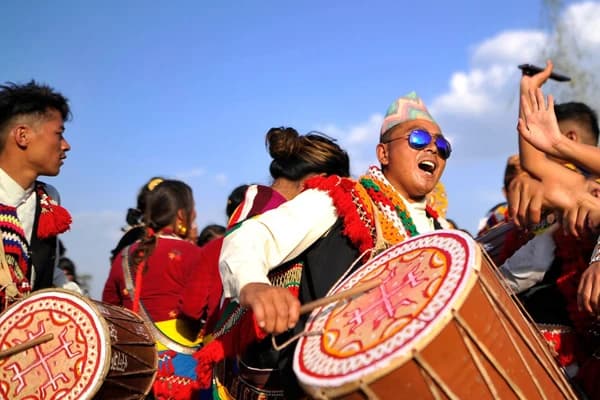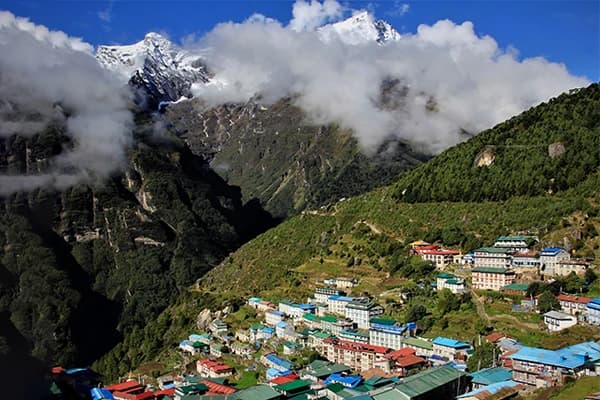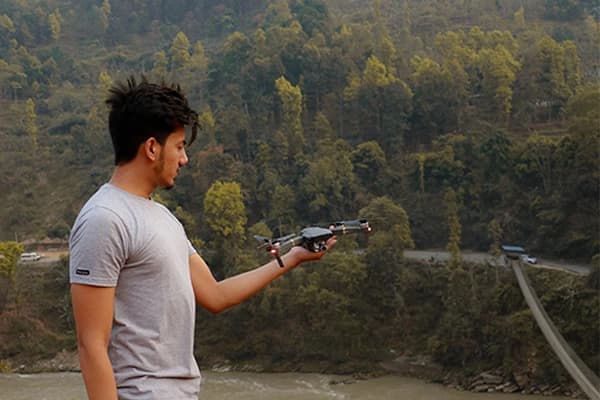Historical Background of Tengboche Monastery
The history of the Tengboche monastery can be dated back to the ancient time when Lama Sangwa Dorje (a revered Buddhist master) used to meditate in the Khumbu region. He predicted that a monastery will be constructed in the Tengboche village.
Following his prediction, in 1916, the monastery was established with the initiation of Lama Gulu (Chatang Chotar) under the guidance and blessing of Ngawang Tenzin Norbu (the fifth incarnation of Sangwa Dorje). The construction of the monastery happened with the support of the local Sherpa community.
Since the construction of the monastery, there was no bad event recorded until 1934. In this year, a devastating earthquake destroyed the original monastery. By the initiation and support of the Sherpa community, the rebuild of the monastery was carried out.
The monastery was again damaged by the fire in 1989 and was rebuilt again. Despite its multiple constructions, the monastery retained its traditional Tibetan style. You can see the modern safety features in the monastery.
Since then, the monastery has been standing firmly in the Tengboche village of the Khumbu region.
Cultural and Religious Importance of the monastery
Tengboche monastery is situated in the heart of the Sherpa culture. The monastery influences the local customs, daily practices, and community events.
In the tengboche, monks teach the young monks and laypeople about Buddhist philosophy, meditation, and values such as kindness and respect. The ceremony of the major life events, like Sherpa births, weddings, and funerals, happens in the monastery.
The monastery also provides spiritual guidance to the Sherpa peoples. During the difficult times, Sherpa people are helped by it. In short, the Tengboche monastery has played an important role in maintaining the continuity of Sherpa traditions and identity.
Since its construction, the monastery has been a vital place for Tibetan Buddhism. It is home to around 60 monks who uphold ancient rituals, prayers, and teachings.
Several festivals like Mani Rimdu and losar (tibetan new year) are celebrated with great joy in the monastery. The festival celebrations, especially in the Tengboche monastery, attract a large number of crowds from the nearby areas.
The monastery is also popular as the ending point of the trail passing through the ten important monasteries within Sagarmatha National Park.
Scenic Beauty and Trekking Hub
Out of several reasons, the Tengboche monastery is popular also because of the stunning Himalayan views. From the monastery, you can see the gorgeous views of the snow-capped peaks like mount everest, ama dablam, Lhotse, Nuptse, Thamserku, Taboche, Kusum Kanguru, Kangtega, and the holy Khumbila.
The Tengboche monastery also offers views of the deep valleys, rushing rivers like the Dudh Koshi, and diverse Himalayan flora and fauna.
It also serves as a vital resting point for the trekkers trekking on the trails, like the everest base camp trek and the everest three passes trek. Trekkers spend the night in one of the tea houses near the Tengboche monastery.
Visitors and trekkers often take blessings from the resident monks before continuing their journey.
Spiritual Experiences in monastery
There is no doubt that the Tengboche monastery is the spiritual heart of the Khumbu region. There, you can experience the spiritual practices surrounded by the scent of incense and the sound of chanting. Every morning, the 60 monks perform daily rituals, meditation, and prayer ceremonies.
The atmosphere of devotion and reflection can be experienced in the main prayer hall that is adorned with intricate murals and statues of Buddha and other deities. The surrounding mountains further help experience the sense of inner calm and foster spiritual rejuvenation.
Several trekkers as well as travellers visit the monastery for rest, meditate, and seek blessings for their journey. It makes the Tengboche monastery one of the best places to experience spirituality in the Khumbu region.
The Mani Rimdu Festival
The Mani Rimdu festival is a 19-day Buddhist festival held annually at Tengboche Monastery. The festivals commemorate the founding of Buddhism by Guru Rinpoche Padmasambhava. It is a major festival, especially for the Sherpa community.
According to the Tibetan lunar calendar, the Mani Rimdu festival is going to be celebrated on November 5, 6, and 7, 2025.
The major activities of the festivals in the monastery premises include religious songs (chanting), masked dances (chham), dramatic performances of Buddhist myths and legends, sand mandala creation, empowerment ceremonies, and communal feasting.
The festival brings the Sherpa peoples together, preserving the Sherpa culture and age-old traditions. International tourists visit the monastery and take part in the festival celebrations.
Planning Your Visit to Tengboche Monastery
1. Best Time to Visit the Monastery
The best time to visit the monastery is during spring (March–May) and autumn (September–November). These months offer the best weather conditions, favorable for adventure activities like trekking and hiking. The skies are clear, temperatures are moderate, and so on.
Or, you can also go during the winter season with proper preparations and planning. In this season, you can enjoy the fewer crowds, lower prices, colder weather, and the chance to witness the snowfall.
2. How to get there?
There are several ways to reach the Tengboche Monastery. You can start from Ramechhap, fly to Lukla, and then trek to the Tengboche Monastery.
The other way is to fly from Kathmandu to Lukla and then trek to the Tengboche monastery. While some try the road drive to reach the Lukla, followed by the multi-day trek to the monastery.
3. Trekking Tips
- Make sure that you have reasonable fitness and are comfortable with long walks on varied terrain and some uphill sections.
- Practice long hiking with the loaded backpack and on uneven trails before your trek.
- Pack essential gear needed for the trek.
- Begin the trekking early in the morning to avoid afternoon heat and enjoy clear mountain views.
- Drink plenty of the water to help with acclimatization and energy levels.
- Walk at a steady pace, take regular breaks, and listen to your body.
- Dress modestly and remove shoes before entering the Tengboche Monastery.
- Be alert for the symptoms of altitude sickness issues. Take medicines if seen.
- Make sure you have travel insurance before visiting the Tengboche Monastery during the winter season.
- Hire a knowledgeable trekking guide for your trekking journey.
- Interact with the local Sherpa community to gain the cultural insights firsthand.
- Ask for permission before taking photographs of any person or the idols.
- Respect the local cultures and traditions.
Conclusion
The Tengboche Monastery, situated in the Khumbu region of Nepal at an elevation of 3,867 meters, is the largest gompa in the area and a central spiritual hub for the Sherpa community. Visit the monastery to learn about spirituality, to enjoy the panoramic views of Himalayan peaks, and much more.





